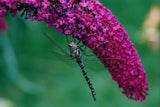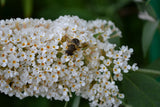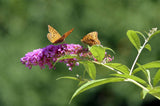Buddleia or commonly called butterfly bush are fast growing, drought tolerant, butterfly attracting shrubs that do best in full sun and well drained soils. Straight species Buddleia davidii can grow from 8-10 feet tall and wide. And dwarf (Chip, Miss, Flutterby, and Pugster series) will maintain a 3–4-foot size. Buddleia is not native to North America.
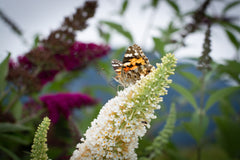
Colors can range from white, all shades of pink, lavender, red to maroon, yellow, orange, and various purples. Keep the plant deadheaded for continual flowering all summer into early fall. The flowers are largest on the terminal end of the branches and if dead-headed will continue to bloom down the stem. Most have fragrant flowers. Most have blue gray leaves and are very drought tolerant once established.
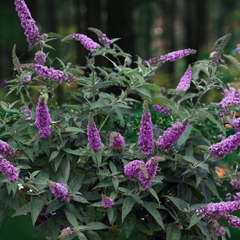
Many contest that Buddleia is listed as an invasive plant but only the Buddleia davidii which is the larger of the species has come into question. During the drought 10 years ago the seeds which are prolific started coming up everywhere and displaced native plants in Oregon and Washington so were put on the invasive plant study list. Once this was questioned growers developed newer varieties that only produce about 2% of the seeds that B. davidii produced. Oregon and other states that questioned the invasiveness of the plant now recommend the newer smaller varieties and find that they do very well, provide nectar to butterflies and pollinators, and are tidy. Others still feel that since the plant offers nothing other than nectar and is not a host plant for insects a true native butterfly garden would not contain this plant. I would recommend utilizing the smaller varieties to attract butterflies and
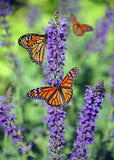
pollinators and planting plenty of natives for larva in and around your Buddleias.
Buddleias prefer well drained soils, full sun at least 6-8 hours, and good air circulation. Pruning the newer more compact varieties should be done in mid-March removing any dead wood and tipping to shape. If you have Buddleia davidii I like to tip in late fall so that snow or ice will not break down the branches and in mid-March I cut it back hard to about 2-3 feet.
If you want to see butterflies in and around your gardens Buddleia attracts them from summer into fall.
